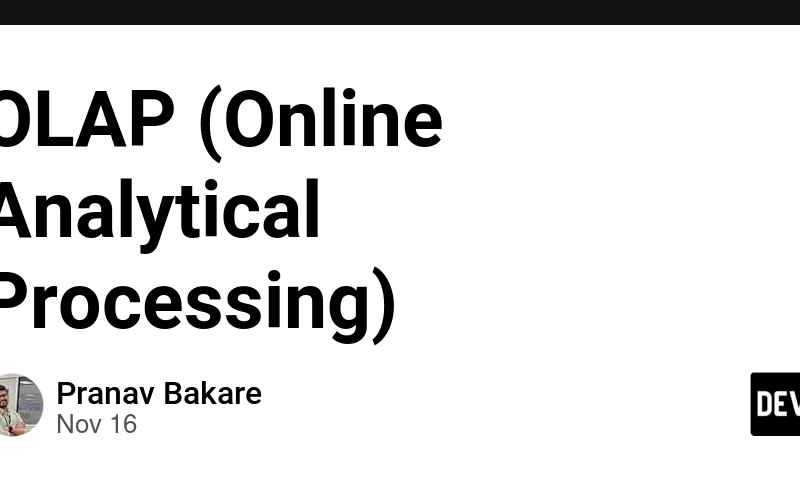OLAP (Online Analytical Processing) is a technology that enables analysts to extract and query data interactively from multidimensional data warehouses. It provides a way to analyze complex datasets for decision-making, typically in business intelligence (BI) applications.
Definition of OLAP
OLAP is a system for organizing large business databases and supporting complex analysis. Unlike OLTP (Online Transaction Processing), which focuses on fast, real-time transactional operations, OLAP emphasizes analytical operations such as summarizing, aggregating, and comparing data across multiple dimensions.
Core Concept of OLAP
At its core, OLAP uses a multidimensional data model, often referred to as a “cube.” This cube allows data to be organized and visualized in multiple dimensions, such as:
Time (e.g., Year, Quarter, Month)
Geography (e.g., Country, Region, City)
Product (e.g., Category, Brand, Item)
Each dimension represents a distinct perspective of the data, making it easier to conduct in-depth analyses.
OLAP Operations
OLAP offers several powerful operations to explore and manipulate data within these multidimensional cubes. These operations include:
- Slice
Definition: Extracts a single dimension from a cube, creating a “slice” of the data for specific analysis.
Example: If you have sales data across multiple years and products, a slice operation could isolate sales for 2024 only.
Result: A two-dimensional view of data for the chosen dimension.
- Dice
Definition: Extracts a sub-cube by applying filters across multiple dimensions.
Example: If the data cube contains dimensions for time, product, and region, a dice operation might show sales of Laptops in the North America region for the year 2024.
Result: A smaller, filtered cube for focused analysis.
- Drill-Down
Definition: Moves from summarized data to detailed data by navigating through hierarchical levels in a dimension.
Example: Drilling down from yearly sales to quarterly, monthly, or daily sales.
Result: More granular insights.
- Drill-Up (or Roll-Up)
Definition: Aggregates detailed data into higher-level summaries.
Example: Rolling up daily sales to summarize monthly or yearly performance.
Result: Higher-level trends and patterns.
- Pivot (or Rotate)
Definition: Rotates the data cube to view it from different perspectives, changing the layout of dimensions.
Example: Switching rows and columns to view sales by product category instead of sales by region.
Result: A reoriented view for alternative insights.
- Aggregation
Definition: Summarizes data by applying mathematical functions like SUM, AVERAGE, COUNT, etc.
Example: Calculating total sales across all regions or the average revenue per product.
Result: A concise representation of data.
Detailed Examples
Multidimensional Data Cube
Imagine a company has sales data organized in a cube with the following dimensions:
Time: Years → Quarters → Months
Location: Country → Region → City
Product: Category → Brand → Item
Each cell in the cube holds a value, such as total sales.
Applying OLAP Operations
Slice: Select sales data for 2024.
Dice: Focus on Laptop sales in North America during Q1 2024.
Drill-Down: From yearly sales, drill down to quarterly sales for further analysis.
Roll-Up: Summarize city-level sales to the region level.
Pivot: Switch the dimensions to analyze sales by product categories rather than by time.
Advantages of OLAP
-
Multidimensional Analysis: Enables quick insights across various dimensions.
-
Speed: Pre-computed aggregates speed up queries.
-
User-Friendly: Business users can perform complex analysis without programming knowledge.
-
Customizable Views: Data can be sliced, diced, and pivoted easily.
OLAP Use Cases
Sales Analysis: Track performance across products, regions, and time.
Financial Planning: Budget forecasting and variance analysis.
Marketing: Campaign effectiveness and customer segmentation.
Supply Chain: Inventory analysis and demand forecasting.
OLAP is fundamental in decision support systems and is widely used in business intelligence to enable data-driven strategies. Let me know if you want further elaboration on any of these points!
Source link
lol

